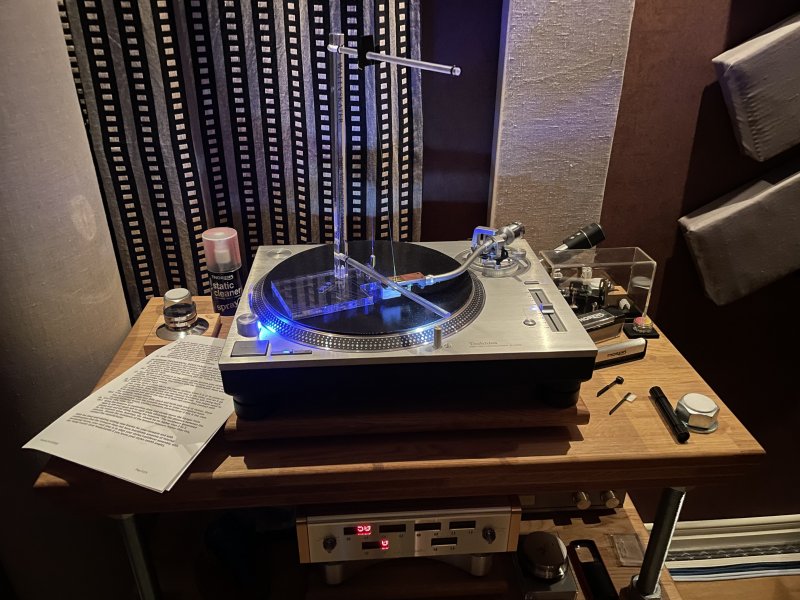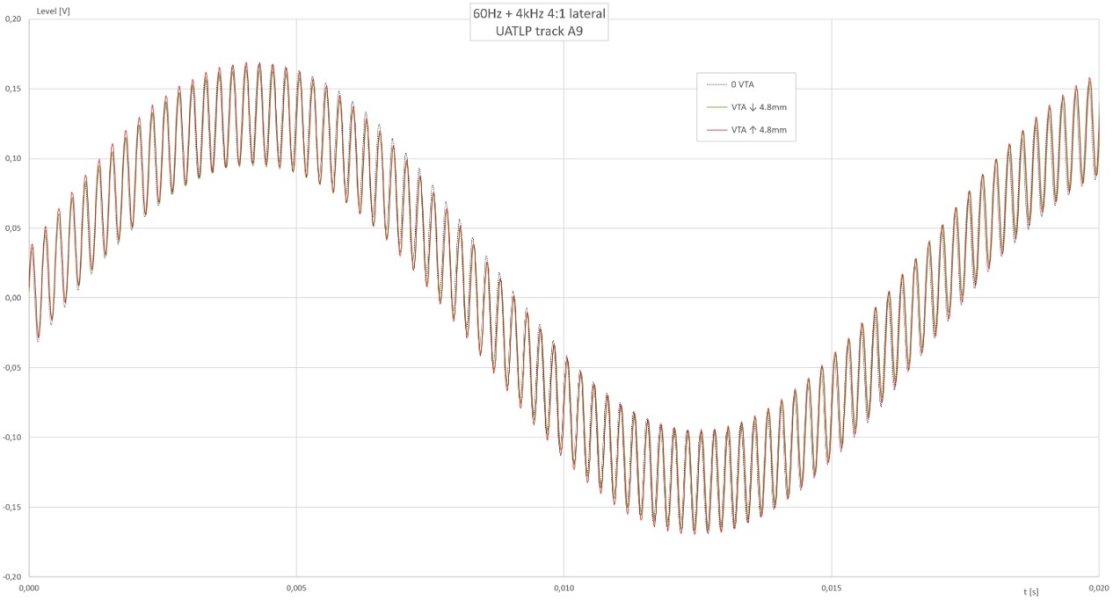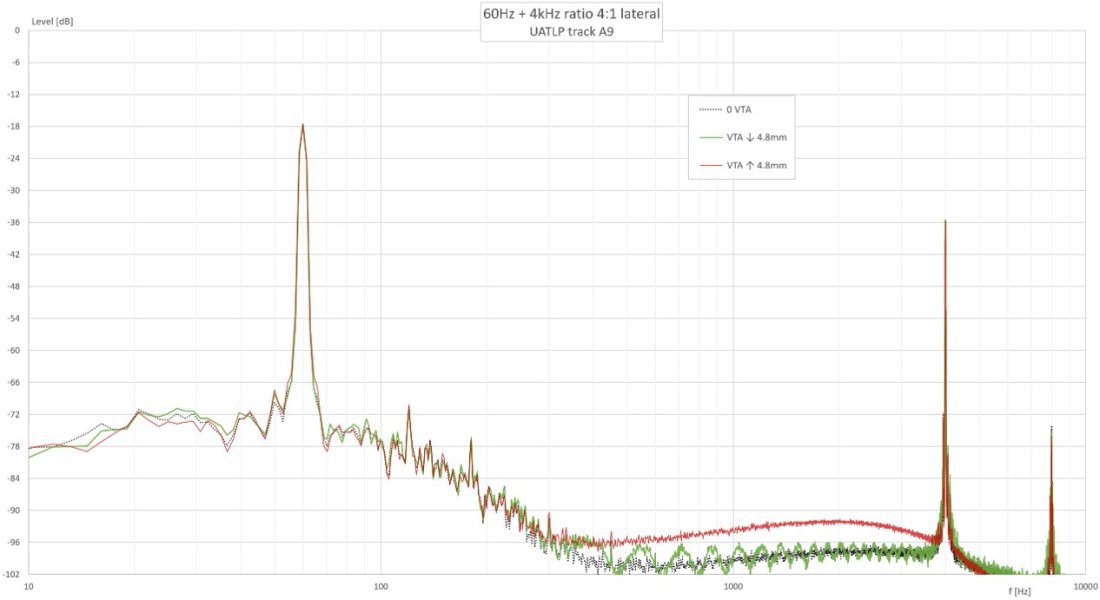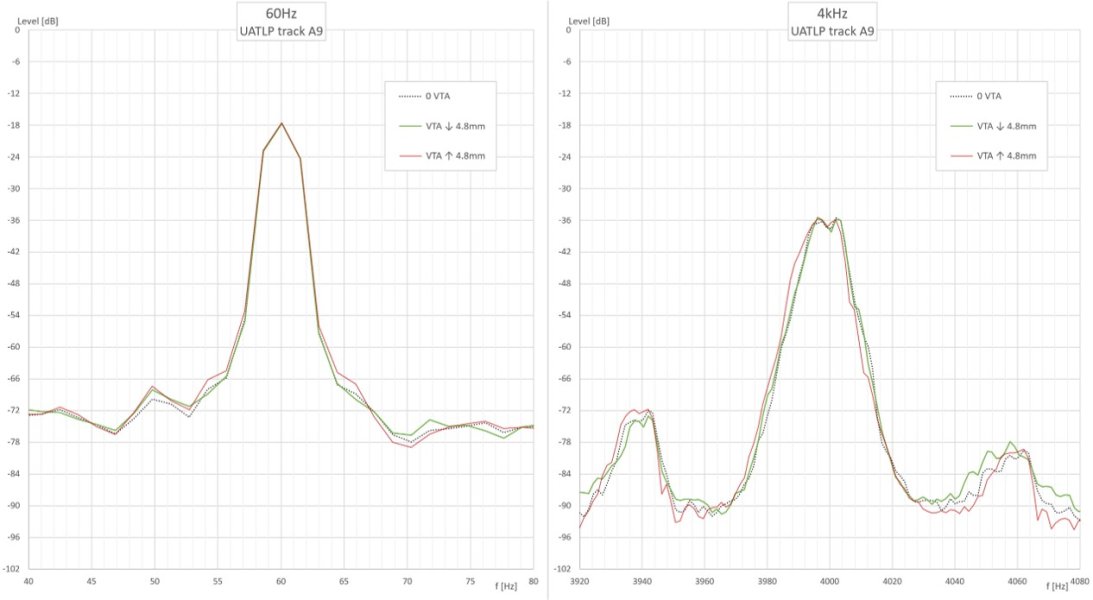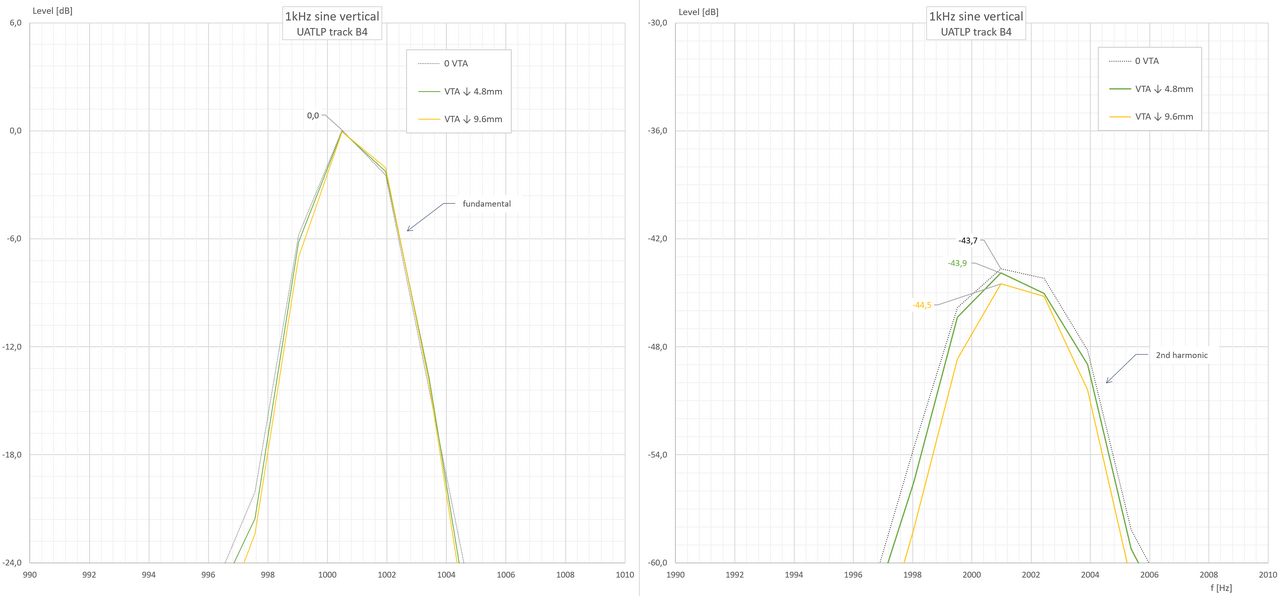Hi mtemur,additional to parallax and optical errors there are also lots of variations mentioned above on measuring angle on a picture taken by a microscope. and still an important problem remains unsolved which is trying to measure a dynamic system with static methods.
on the other hand aligning zenith angle with AM and test record is a dynamic method for a dynamic system. I used AM and test records to setup lots of turntables and cartridges. zenith, SRA and anti-skating adjustments end up at the same alignments using both AM test record and Analogue Productions test record. if you can make record sit perfectly flat on the platter (vacuum hold down) than azimuth tracks give the same alignment too. track locations are totally different on those two records and they're cut at different lathes but software leads you to the same cartridge alignment position in the headshell. which means both records are carefully and rightfully cut and pressed. more importantly it means the alignments you make are correct and also sounds better compared to optical alignment methods.
I am not sure whether you are commenting generally on the challenges of univariate measurements using microscopy or if they are meant for me and my use of them. I imagine you meant your comments generally since we have both functionally eliminated optical distortion error and we also test dynamically those parameters that respond to playback; namely, SRA/VTA and, to a much lesser extent, azimuth. Zenith error is fixed and is not altered by dynamic conditions. However, if your tonearm has excessive (or not enough) horizontal torque force or frictional force any “zenith error” test using a test record will certainly be informed by this condition and the resultant “optimal” setting for zenith error will be influenced by this errant force which will then result in doing the best you can for zenith error with what you don’t know you have at play in your tonearm. Out of control torque force will certainly cause additional issues that must be contended with but unless you measure directly for it you cannot know it exists and to what extent. This is why I tell people that if they get nothing else from WallyTools, get a WallySkater to measure these horizontal and frictional forces to ensure your tonearm doesn’t screw up your cantilever alignment.
Eliminating the variables - that is the value of univariate measurements and why they are the sine qua non of analytical certitude.
so I am not sure what “optical alignment methods” you might be referring to other than those we do regularly - and have been getting progressively better and better at it where as of about 4-5 weeks ago we can safely say our accuracy is down to a small fraction of a degree as per above. In short, I have to contest the assertion that the methodology is problematic or somehow less accurate than multivariate analysis which is fraught with problems starting with the faceting of the cutting styli used to cut the lacquer for the test record and then negatively influenced by a minimum of 14 other variables that we’ve counted to date. But don’t take my word for it: we intend to make it the subject of one of several peer reviewed research papers.


